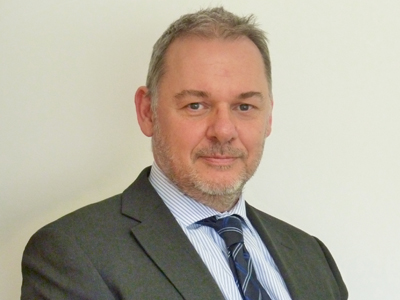CarbonCo director Jonathan Tame
After a period of time without being afforded the right focus, the Carbon Balanced initiative is back, with new paper suppliers on board and a renewed call for printers to join the scheme.
The numbers illustrate the degree of deterioration that the Carbon Balanced scheme had suffered, even before the demise of PaperlinX early in 2015. When Jonathan Tame, whose brainchild it had been, left the paper giant two years ago, there were 70 UK Carbon Balanced printers; when PaperlinX went out of business, there were 13.
Some 12,000 individual print jobs on behalf of 2500 different brands and organisations (involving more than 350 printers) had used Carbon Balanced Paper, where the carbon emissions in production and part of the distribution were offset against worthy environmental projects. The Carbon Balanced Paper initiative has just been relaunched with the support of Antalis, Denmaur Independent Papers and Fedrigoni, and hopes to rediscover these kinds of numbers.
Though administered by CarbonCo, which has Mr Tame as its director, it will be the international conservation charity, World Land Trust (WLT), that will direct the funds received from the Carbon Balanced initiative into purchasing, protecting and reforesting of land under imminent threat of clearance. To begin with, WLT will concentrate on a location in Vietnam called Khe Nuoc Trong, where it hopes to sequester 50,000 tonnes of CO2 per year.
There are a great many environmentally-focused initiatives that printers are able to invest in to try to ‘offset’ the impact that their activities have – various carbon credit schemes that help to pay for industrial projects that will improve the ecological performance of infrastructure. This one is different though, according to Mr Tame: ‘So many others are about industrial projects such as wind turbines that would be happening anyway, even without selling carbon credits. What’s really important about what WLT does is that it is about additionality. This would not be happening if we did not give them the money to do so.’
Saving, protecting and increasing forest areas also brings far greater benefits than simply those linked to carbon dioxide sequestration however: this part of Vietnam is home to a number of extremely endangered species (five on the verge of total extinction) that have been seeing their natural habitat destroyed. It is to be hoped that WLT is able to intervene before these creatures are lost to the world for good.
Certainly the conservation charity is committed to the long term, said Roger Wilson, senior conservationist at WLT: ‘Our approach to these things has to be long term essentially. You cannot do a quick in and out, work there for five years and go away. We think of these projects essentially as 30 years: that’s the mindset.’
So how can printing firms get involved? There are two different elements to Carbon Balanced. Firstly, purchasing Carbon Balanced Paper from one of the three above-mentioned paper suppliers who have become partners to the newly relaunched scheme (a small premium will be added to the cost of the paper, which will pay for carbon credits; each credit balances the emissions in manufacture and mill distribution (DEFRA’s Scope 1 and 2 emissions) of 100 kg of paper, based on EURO-GRAPH’s calculation that on average a tonne of paper has a carbon footprint of 670 kg) entitles the job produced using that paper to carry the World Land Trust Carbon Balanced Paper logo, with certification provided to confirm the carbon benefits.
Secondly, printing companies can become ‘Carbon Balanced Printers’, of which there were 11 named at the relaunch of the initiative (Banbury Litho, Barnwell Print, Cross Print, Curtis Packaging, Healeys Printers, Kingfisher Press, NB Colourprint, Pinstripe Print, Potts Print, Resource and The Print Academy). To join this group, companies need to go through a process of measuring their carbon footprint, having it verified (and re-verified every two years) and then balancing through offsetting.
Several benefits accrue, said David Woodcock, managing director of Resource: ‘The World Land Trust is a recognisable and credible organisation, and contributing to the work it does makes a positive difference. Using the WLT logo alongside the FSC logo creates a differentiator and gives our sales team a positive message to talk to clients about. And it’s a great story for our clients to communicate – promoting the carbon offsetting of the product they have commissioned.’
With PaperlinX exiting the market, Carbon Balanced was left in limbo. It has taken until now to resurrect the initiative through CarbonCo, but now this green pipeline can be reopened once more.





